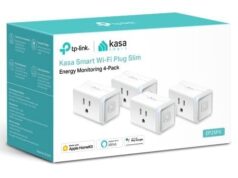
I’m a big believer in growing your garden up using trellises, arbors and other supports. Growing up provides three exceptional benefits in a garden. First, it provides more room to grow. While some items naturally grow up, like bean vines, others, like pumpkins don’t traditionally grow up, but rather sprawl out across the ground, taking up a lot of space. Second, creating vertical points of interest in your yard makes the space so much more interesting. Lastly, it creates shade and sun. For the items growing on the support, they’re going to get more sun than they would on the ground, and on the other side of that trellis, shade is created. The shade is good for people and animals, who need respite in the summer, but also for your plants. It creates a microclimate. There’s a screen for wind, and the temperature on the other side is going to dip down a few degrees through the lack of sun.
The key to all of this is to choose the right support and the right plant. A trellis is simply a vertical structure that may be flat or accordion-style. An obelisk-type trellis has a smaller footprint, but more support, as they tend to be round or square, coming to a point at the top. Arches can be skinny or wide, but cross a space that people can walk under. An arbor has vertical and horizontal supports for plants such as berries, grapes or figs. Finally, a pergola or cabana is more specifically for creating a space under for tables, chairs, or whatever you’d want to do with the space. While all of these structures look nice on their own, they have open designs specifically so you can grow plants on them. Now you just have to decide what to grow.
Edible fruit like figs and grapes will provide fruit and huge, leafy shade
I always like to consider ways to grow food—if not for me, then birds and other local wildlife. Figs and grapes are two plants that love support and can be molded around a structure, but are going to require a lot of hand-holding (this is true generally of both, not just on a pergola). Figs and grapes both grow vigorously and need to be pruned yearly, and should be treated to prevent fungal infections like rust. These both produce fruit, which sounds delightful, but if you do not harvest it, that fruit will drop and make a mess and bring pests. You can work to reduce this problem by thinning the fruit, which means reducing the amount of fruit as a trade-off for bigger, better fruit. Both figs and grapes offer huge leaves that can also be used on their own for eating but will work to provide shade as well. While these plants are perennial, they are not evergreen, so during the winter, you’ll see the vines but not the leaves.
Passionfruit and hops are prolific vines that will cover your entire structure easily
Hops and passionfruit are edge-case edibles. Hops are essential to brewing beer, but even if you don’t, they are magnificently scented flowers on a very prolific vine that will climb on its own. The same is true for passionfruit, which doubles in size year to year and features gorgeous passionflowers. If you let it grow, you will eventually develop passionfruit, too. Because of how prolific these plants are, you really want to consider how you’ll handle them in fall. Passionflower really shouldn’t be pruned much, but hops can be cut almost to the ground year to year and will just come back stronger. Even in the short summer season, they can cover your entire pergola.
Consider the birds
If you’d like to fill your space with hummingbirds, bees and other beneficial pollinators, you need to give them something to eat. Floral vines like jasmine, trumpet vines, honeysuckle, clematis and cup-and-saucer vine all provide scented flowers that attract these pollinators while providing shade on the structure. In fact, there are enough varieties of these vines that you can choose multiple honeysuckle vines, each with a different bloom time, and have an entire season of flowers, with different-colored flowers. Vines all have different rules about when and how much you prune them. Clematis has three different pruning groups alone, so you’ll want to make sure you look up how to prune your specific vines.
Seasonal edibles provide short-term growth but high interest
A great idea for a pergola or trellis is regular vining beans. Beans like scarlet runner or hyacinth beans are edible (but really meant to be grown for their looks) but there’s a whole world of shelling beans that grow prolifically for a season; then, after you harvest the beans, you cut the vines down. These are all annuals, meaning they only live for the season. If you allow the beans to just drop, they will reseed on their own and might eventually perennialize. You’ll want to ensure that you’re choosing pole beans, not bush beans—that information will always be on the seed packet. Most green beans are pole beans, and also grow prolifically in one season. We’ve previously covered how pumpkins and squash can be trellised; if you just grew them alone, they’d provide a lot of shade. You don’t have to choose just one option: You can grow multiple things together, like beans and pumpkins.
Don’t grow invasive vines
Although some people love them, vines like ivy or wisteria can do real damage to a structure and take over a space. Akebia is not technically invasive, but can grow out of hand too easily. Obviously, don’t plant kudzu. Other problematic invasive vines include wintercreeper, porcelain berry, and oriental bittersweet.
Plants need good soil, water, food, sunlight and pruning
Depending on the structure of your trellis or pergola, your plants might be fine on their own finding the support, but if not, consider loose garden ties to train the plants onto the structure. You want to ensure these are never tight, or they won’t allow growth. You need to plant the vines into good soil that is loose and loamy, and has some nutrition in it. If the pergola is planted on the ground rather than a cement or rock base, you can work the soil around the pergola to aerate it and add fertilizer with a broadfork or shovel. If your structure is on cement, you’ll need planters, and they need to be appropriately sized for the plant—so larger than you imagine. You’ll fill them with potting soil, and since potted plants dry out more easily, you’ll need to ensure they get watered routinely and fed yearly with fertilizer. The nice thing about planters is that you can move them around, so if a plant isn’t getting sunlight, you can move it where it will.








